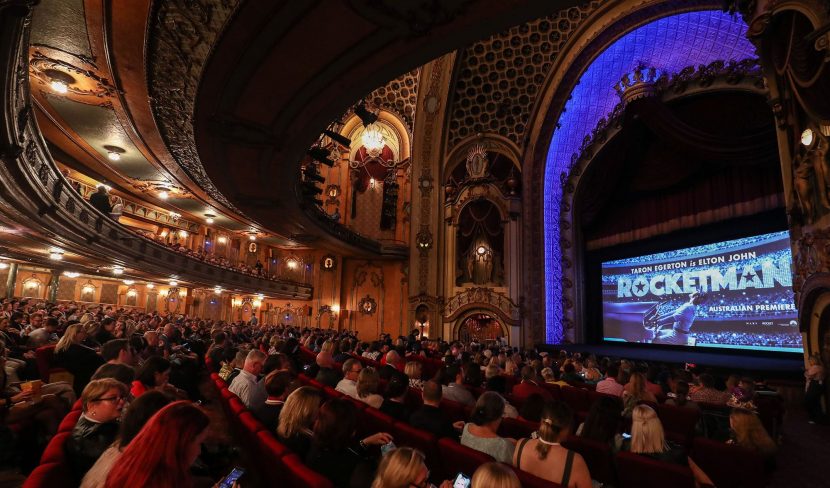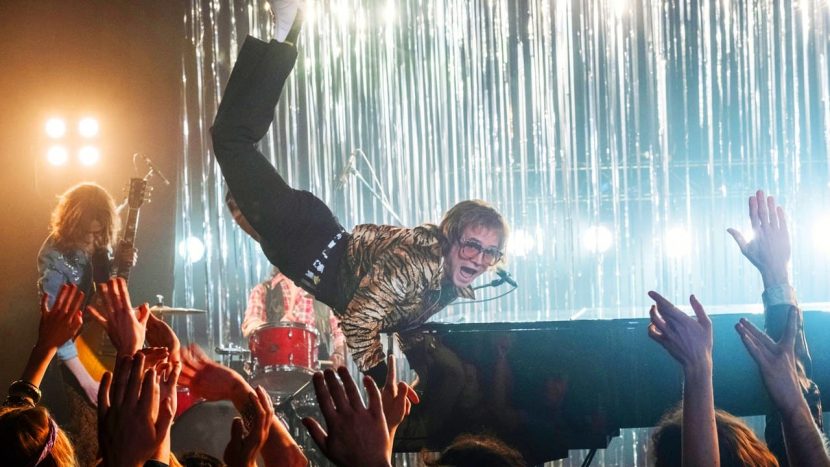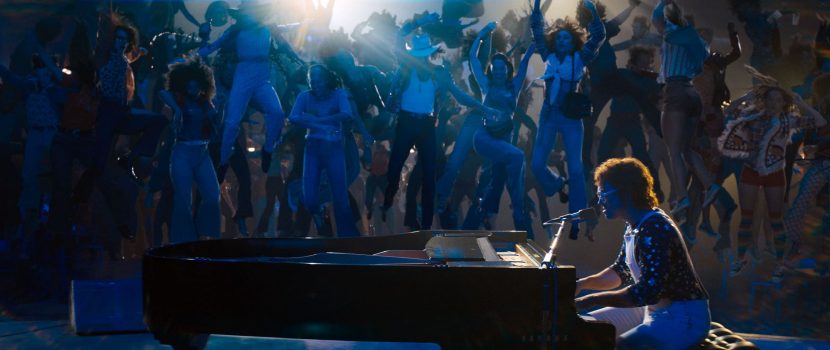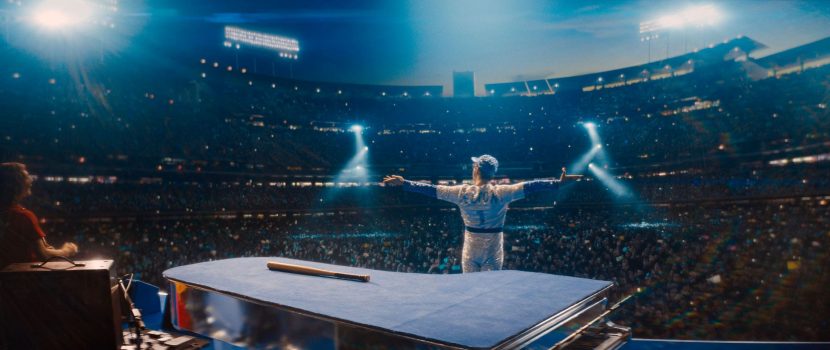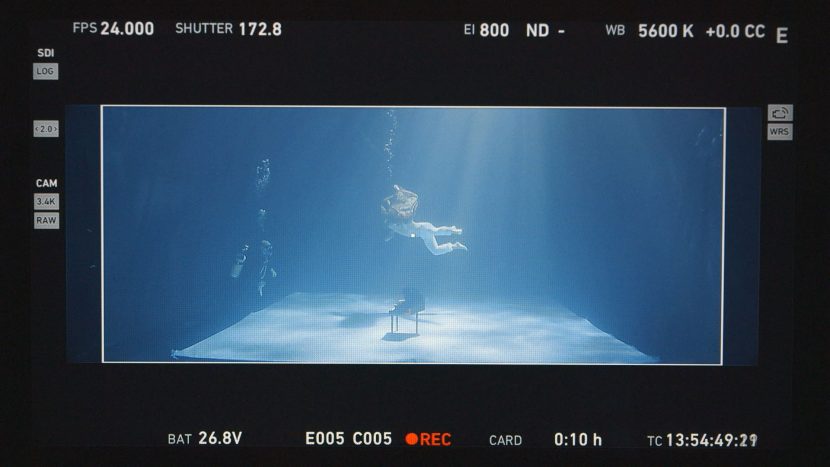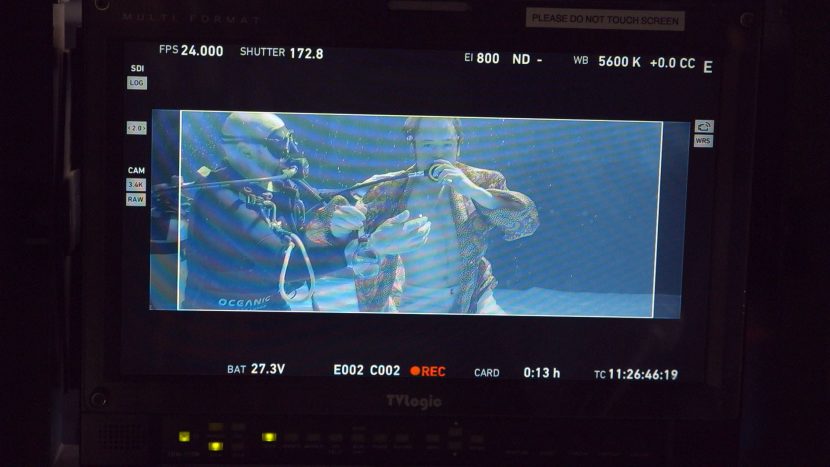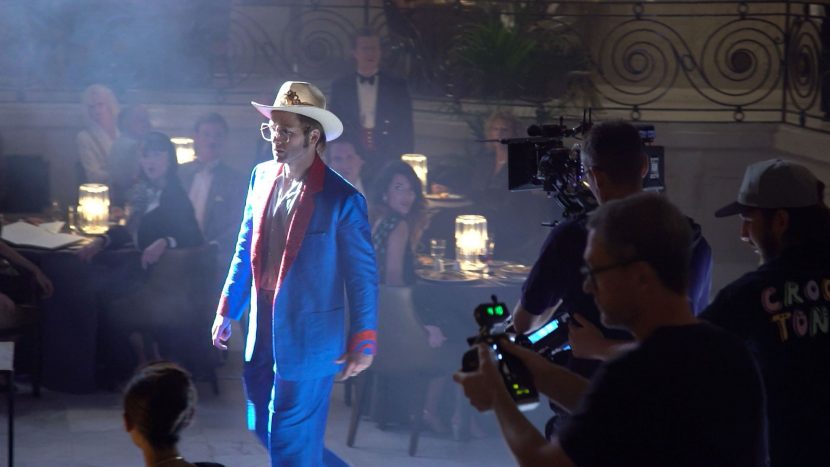Rocketman was directed by Dexter Fletcher, and is the second collaboration between the film’s star Taron Egerton and Fletcher, after Eddie the Eagle. The VFX supervisor on Rocketman was Cinesite’s Holger Voss.
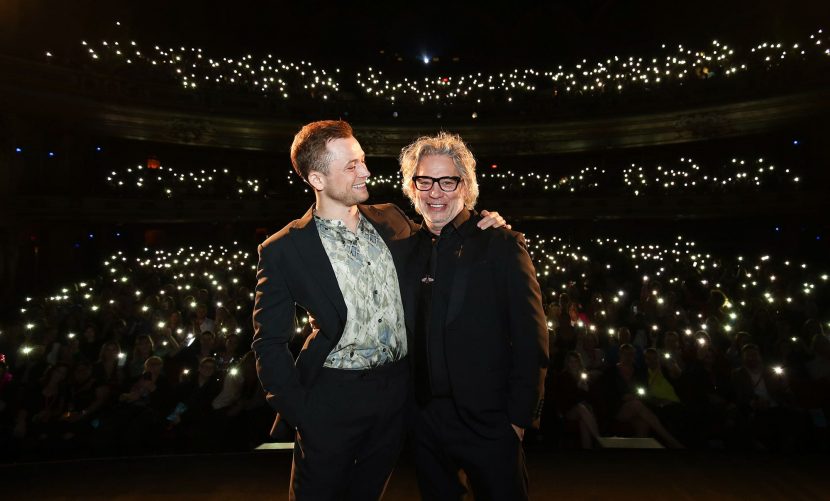
Rocketman is an epic musical fantasy about the incredible human story of Elton John’s breakthrough years. The film follows the fantastical journey of transformation from shy piano prodigy Reginald Dwight into international superstar Elton John. This inspirational story – set to Elton John’s most beloved songs, performed by star Taron Egerton – tells the universally relatable story of how a small-town boy became one of the most iconic figures in pop culture.
Visual effects support the colourful narrative of John’s rise to stardom and the challenges he faces along the way. Cinesite’s work ranged from creating seamless shot transitions, right through to nostalgic dream sequences and stadiums with massive crowds for Elton’s performances.
While the work was completed in Montreal, Fletcher was based in London, so Cinesite’s London studio hosted synced RV sessions for him to review progress throughout post production.
VFX Supervisor Holger Voss: “Dexter’s approach to the visual effects was always narrative driven; as long as the story was respected he was open to suggestions. He would describe the look or effect he wanted us to achieve and it was our job to figure out how to do it. He was very trusting of us and we had a great working relationship.”
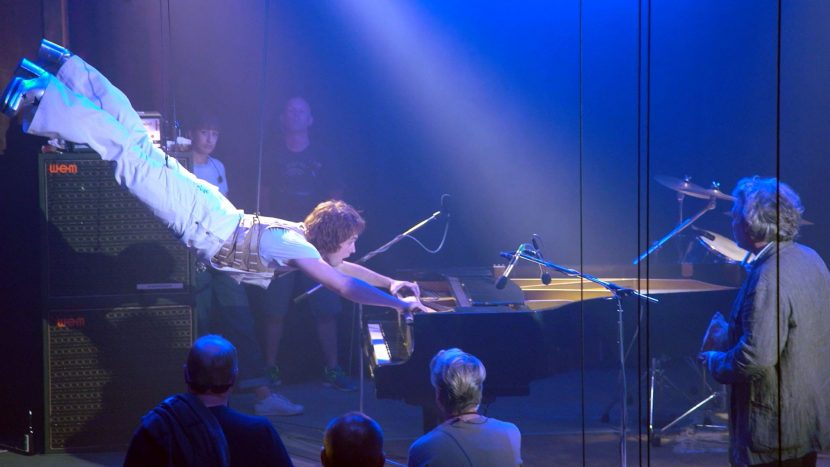
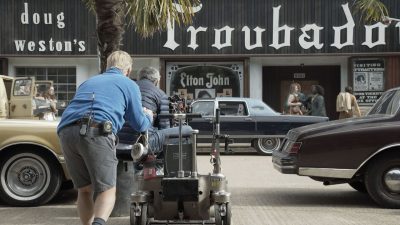 The iconic performance at the Troubadour was complex as production decided late in planning to switch from 96 fps to 24 fps, as they were worried about the sequence having reduced motion blur due to the reduced shutter time. This means that the Cinesite team had to do a lot of work with the retiming and removing any telltale artefacts. Cinesite used their own in-house pixel flow tools for the retiming. “We actually first recreated the in-between frames that took us to 48fps while keeping the same motion blur. Then we ran it through an optical flow process to take the frame rate to 96 fps,…and then did the clean up on that.” explains Voss.
The iconic performance at the Troubadour was complex as production decided late in planning to switch from 96 fps to 24 fps, as they were worried about the sequence having reduced motion blur due to the reduced shutter time. This means that the Cinesite team had to do a lot of work with the retiming and removing any telltale artefacts. Cinesite used their own in-house pixel flow tools for the retiming. “We actually first recreated the in-between frames that took us to 48fps while keeping the same motion blur. Then we ran it through an optical flow process to take the frame rate to 96 fps,…and then did the clean up on that.” explains Voss.
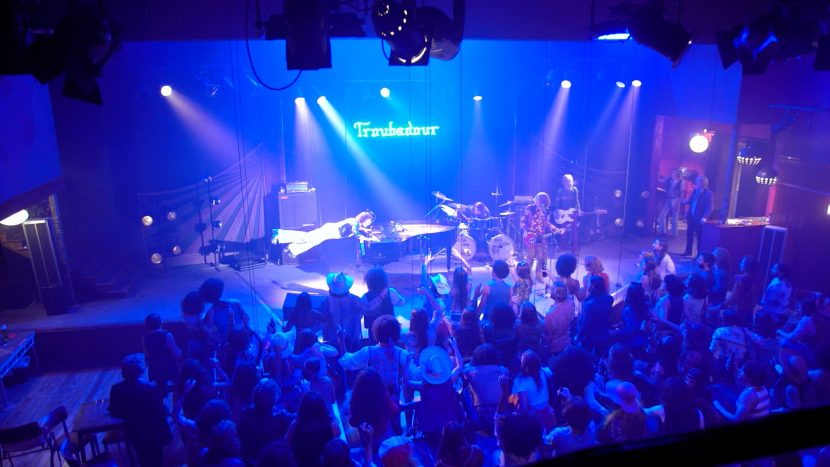
Additionally, while a lot of the crowd were on wires for the moment the crowd levitates, not all of the crowd was rigged. This meant both rig removal for the foreground extras in wire rigs, and animating additional crowds floating and compositing them back into the plate.
The sequence featuring the film’s eponymous Rocketman song is one of the most notable in terms of visual effects, involving multiple set ups across a variety of stages and practical sets, including a sequence that begins at the bottom of a pool, featuring an adult Elton and his younger counterpart, and concludes with a recreation of Elton’s famous concerts at Dodgers Stadium.
For the stadium part of the shot, around 150 separate passes of audience members were combined onto cards which were layered throughout the background. Reference was taken from the original concerts to add banners, beach balls bouncing over the crowd, lighters and sparklers. The material was all shot on anamorphic Arri Alexa. Voss recalls that, “it was painful dealing with the flares. So often it was easier to just roto the foreground material off and then reconstruct the flares. But we had to be careful to the calibrate our material and degraded it in terms of chromatic aberration and sharpness at the edge of frame, since almost a full horizontal aperture was used. It was quite a lot of work to match it.” The flares worked well in the stadium sequences and so the team not only matched flares but added an additional one to sell the shot.
All the crowds are actual classic 3D sprite crowds, and Cinesite did not use a Massive or Houdini crowd sim approach. “We built the stadium and populated it with cards, containing footage all the selected people based on the right angle – which was very easy in the beginning when it was just pure stage POV,” explains Voss. But as the edit grew, there were more stadium sequences and it became more and more tricky to make the cards remain orientated with the right footage. “It ended up with a number of wide crowd shots shown at different elevations, and at different angles, with different lighting scenarios. All of which actually made the sprite approach, not necessarily, the easiest choice, but it worked.” The final rocket launch effects were created using a Houdini fluid simulation.
“Most of the complexity for me in this film was in the pool sequence,” explained Voss. Footage of Egerton in a water tank was cleaned up and composited with young Reggie, who was filmed dry for wet on a blue screen stage. His glass space suit helmet was added, along with realistic reflections, bubbles and water particulate.
The underwater effects were two plates that had to be merged but without motion control. Egerton was shot in one plate but, “unfortunately the pool didn’t have tiles everywhere, part of it was just black”. The team had to replace tiles that were missing, add effects so in the end “most of the work was actually taking Egerton out of this plate,” he adds. “The kid was shot on blue screen with a different camera move. It wasn’t motion control or anything, so we then had to project the boy, and projected the piano into a digital pool for most of the shots.”
Egerton was shot under water with weights to hold him under water. For safety there were divers in the shot, and both the divers and their bubbles had to be removed from the shot. The pool was only 10 feet deep, however for Elton’s descent the team made it look much bigger. There were also complex reflections to be managed in the helmet under water, as there was no reflection in the source footage, so it had to all be constructed in post.
In addition to the Dodger stadium sequence, Cinesite also did the stadium for Elton’s Australian concert when he’s wearing his English Queen outfit. Some of these stadiums were then reused for the spinning Pinball Wizard sequence.
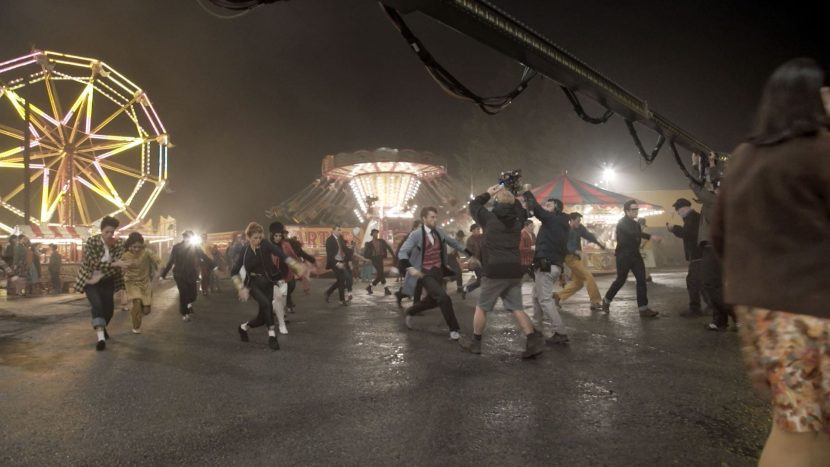
The Pinball Wizard sequence was another visually complex and spectacular shot. Elton plays piano on a spinning pinball game and the camera spins with him, reflecting the delirious state of his life. Holger suggested an approach where the environment wipes from concert to concert, with the rotating piano lid marking the camera transition points. The final shot shows the whirling chaos of Elton’s life, set to his thumping classic track.
The Saturday Night is Alright for Fighting sequence was a combination of nine plate shots with no motion control that needed to be composited into one continuous three and a half minutes shot done as one continuous composite. “There were a lot of the transitions that were retimed and projected back,” says Voss. “Most of the time Egerton was rotoscoped off the plate so we could do the transition behind him and then composite him back on top.” The sequence also included a lot of enhancements to the fair ground set with CG set extensions, including the buildings around the fun fair, which were mostly digital matte paintings.
In total, Cinesite completed 233 shots for Rocketman, many of which also included de-modernising and cleaning up shots which were set in the 50s, 60s and 70s. “We worked on over 400 shots. It was a very fluid edit right up to the end. I think we got editorial changes on the last day actually, so there are a lot of shots that we started that never made it into the final edit,” explains Voss. Many of these were just editing decisions and not major plot changes, for example when Elton and Bernie are on the rooftop of their flat, with a digital matte painting of London. The final film has 20 shots and Cinesite did 40.
